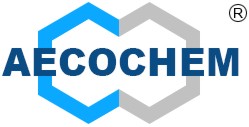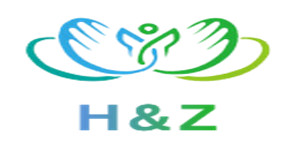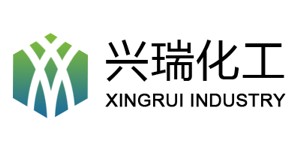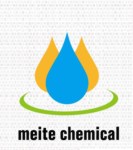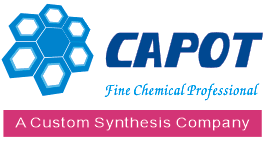|
|
|

|
Suppliers for
Glycidyl methacrylate (GMA)
|
Properties | | CAS |
106-91-2 | | Formula |
C7H10O3 | | EINECS |
203-441-9 |

|
|
33 Registered suppliers
| Purity | ≥ 98%
| | Color | 25±5
| | Epichlorohydrin | ≤ 500ppm
| | Water | ≤ 0.05%
| | Chlorine | ≤ 100ppm
| | Inhibitor( MEHO) | ≤ 100ppm |
| Purity | ≥ 98%
| | Color | 25±5
| | Epichlorohydrin | ≤ 500ppm
| | Water | ≤ 0.05%
| | Chlorine | ≤ 100ppm
| | Inhibitor( MEHO) | ≤ 100ppm |
| Purity | ≥ 98%
| | Color | 25±5
| | Epichlorohydrin | ≤ 500ppm
| | Water | ≤ 0.05%
| | Chlorine | ≤ 100ppm
| | Inhibitor( MEHO) | ≤ 100ppm |
| Purity | ≥ 98%
| | Color | 25±5
| | Epichlorohydrin | ≤ 500ppm
| | Water | ≤ 0.05%
| | Chlorine | ≤ 100ppm
| | Inhibitor( MEHO) | ≤ 100ppm |
More details are to be found here
Molecular Formula: C7H10O3
Molecular Weight: 142.15
Hazard Symbols: Xn,T,T+
UN Number: UN 2810 6.1/PG 3
WGKGermany: 2
PackingGroup: III
HS Code: 29161490
Molecular Formula: C7H10O3
Molecular Weight: 142.15
Hazard Symbols: Xn,T,T+
UN Number: UN 2810 6.1/PG 3
WGKGermany: 2
PackingGroup: III
HS Code: 29161490
Molecular Formula: C7H10O3
Molecular Weight: 142.15
Hazard Symbols: Xn,T,T+
UN Number: UN 2810 6.1/PG 3
WGKGermany: 2
PackingGroup: III
HS Code: 29161490
Molecular Formula: C7H10O3
Molecular Weight: 142.15
Hazard Symbols: Xn,T,T+
UN Number: UN 2810 6.1/PG 3
WGKGermany: 2
PackingGroup: III
HS Code: 29161490
Molecular Formula: C7H10O3
Molecular Weight: 142.15
Hazard Symbols: Xn,T,T+
UN Number: UN 2810 6.1/PG 3
WGKGermany: 2
PackingGroup: III
HS Code: 29161490
Molecular Formula: C7H10O3
Molecular Weight: 142.15
Hazard Symbols: Xn,T,T+
UN Number: UN 2810 6.1/PG 3
WGKGermany: 2
PackingGroup: III
HS Code: 29161490
Molecular Formula: C7H10O3
Molecular Weight: 142.15
Hazard Symbols: Xn,T,T+
UN Number: UN 2810 6.1/PG 3
WGKGermany: 2
PackingGroup: III
HS Code: 29161490
Molecular Formula: C7H10O3
Molecular Weight: 142.15
Hazard Symbols: Xn,T,T+
UN Number: UN 2810 6.1/PG 3
WGKGermany: 2
PackingGroup: III
HS Code: 29161490
Molecular Formula: C7H10O3
Molecular Weight: 142.15
Hazard Symbols: Xn,T,T+
UN Number: UN 2810 6.1/PG 3
WGKGermany: 2
PackingGroup: III
HS Code: 29161490
Molecular Formula: C7H10O3
Molecular Weight: 142.15
Hazard Symbols: Xn,T,T+
UN Number: UN 2810 6.1/PG 3
WGKGermany: 2
PackingGroup: III
HS Code: 29161490
Molecular Formula: C7H10O3
Molecular Weight: 142.15
Hazard Symbols: Xn,T,T+
UN Number: UN 2810 6.1/PG 3
WGKGermany: 2
PackingGroup: III
HS Code: 29161490
Molecular Formula: C7H10O3
Molecular Weight: 142.15
Hazard Symbols: Xn,T,T+
UN Number: UN 2810 6.1/PG 3
WGKGermany: 2
PackingGroup: III
HS Code: 29161490
Molecular Formula: C7H10O3
Molecular Weight: 142.15
Hazard Symbols: Xn,T,T+
UN Number: UN 2810 6.1/PG 3
WGKGermany: 2
PackingGroup: III
HS Code: 29161490
Molecular Formula: C7H10O3
Molecular Weight: 142.15
Hazard Symbols: Xn,T,T+
UN Number: UN 2810 6.1/PG 3
WGKGermany: 2
PackingGroup: III
HS Code: 29161490
| Density | 1.042
| | Boiling Point | 189°C
| | Refractive index | 1.449-1.451
| | Flash Point | 76°C
| | Solubility | 0.5-1.0 g/100 mL at 20°C |
More details are to be found here
More details are to be found here
More details are to be found here
More details are to be found here
More details are to be found here
English name:Glycidyl methacrylate
Synonyms:acriesterg;blemmerg;blemmergma;CP105;cp 105;Glycidolmethacrylate; glycidolmethacrylate;Glycidyl alpha-methylacrylate
CAS:106-91-2
Molecular formula:C7H10O3
Molecular Weight:142.15
Melting point:-52°C
Boiling point:189 °C(lit.)
Density:1.075 g/mL at 20 °C
Refractive index:n20/D 1.449(lit.)
Flash point:169 °F
Storage conditions:Refrigerator
Water solubility:0.5-1.0 g/100 mL at 20 ºC
BRN:2506
Stability:Unstable. Light sensitive. May be stabilized with around 100ppm MEHQ. Refrigerate.
Chemical properties: colorless liquid. The boiling point of 189 ° C, the relative density of 1.073 (25/4 ° C), the refractive index of 1.4494, a flash point of 76 ° C. Soluble in organic solvents, do not dissolve in water.
Usage:
1. Mainly used in powder coatings, adhesives for thermosetting coatings, fiber treatment agents, adhesives, antistatic agents, vinyl chloride stabilizers, rubber and resin modifiers, ion exchange resins and printing inks.
2. Mainly used in acrylic powder coating, latex paint, textile leather finishing agent, adhesive, medicine, etc.
3. GMA, because its molecules that contain carbon-carbon double bonds, but also contains epoxy groups, both free radical type reaction, but also for ionic reaction, therefore, with high reactivity, can be carried out separately Different reactions, is an important fine chemical raw materials. Used in acrylic and polyester decorative powder coatings, industrial and protective topcoats, alkyds, adhesives, acrylic resin / emulsion synthesis, PVC coatings, hydrogenated LER substitutes, plastic modified, flame retardant materials, water absorption Materials, polymer capsules, crosslinking monomers and reactive diluents
Brief manufacture process:
By sodium methacrylate and epichlorohydrin reaction derived. Consumption of raw materials fixed: methacrylic acid 780kg / t, epichlorohydrin 690kg / t, sodium hydroxide 330kg / t.
Description:
Because GMA molecules are active vinyl and ion-reactive epoxy two functional groups, can be functional group polymerization, but also to the ionic reaction polymerization, it can be used for ethylene-based polymers and polycondensation-type polymer Modification, GMA can be involved in three ways polymerization, one is ethylene polymerization, the epoxy group in the branched chain, the `O` polymer [2]; the other is the epoxy ring, so that vinyl V `type polymer [3]; thirdly, the compound with active hydrogen reacts with GMA to form a chain on the epoxy group. By any one of the above-described three methods, the polymer is modified at the time of polymerization. In the coating, due to the addition of GMA, can improve the coating hardness, gloss, adhesion and weather resistance, can be used for acrylic coatings, acrylic coatings, alkyd coatings, vinyl chloride resin and some water-based paint.
Glycidyl methacrylate
Glycidyl methacrylate
For adhesives and non-woven fabrics, for acrylic emulsion, it can improve its metal, glass, cement, polyvinyl fluoride and other adhesive force; for the synthesis of latex non-woven fabric, without affecting the feel Circumstances, to improve its washability. For synthetic resin materials processing, can improve the spray formability, extrusion molding, and significantly improve the resin and metal adhesion. For synthetic fiber, the dyeing of fiber, can improve its tinting strength, and improve color fastness, improve wrinkle-proof, anti-shrink ability. This product can improve the sensitivity of photosensitive resin, resolution, corrosion resistance. This product and polyolefin grafting, can improve the tensile strength, bending strength. In addition, the product can also be used as ion exchange resin, chelate resin, medical selective membrane, anti-coagulant, dental materials, soluble adsorbent raw materials. Also used for rubber modification.
English name:Glycidyl methacrylate
Synonyms:acriesterg;blemmerg;blemmergma;CP105;cp 105;Glycidolmethacrylate; glycidolmethacrylate;Glycidyl alpha-methylacrylate
CAS:106-91-2
Molecular formula:C7H10O3
Molecular Weight:142.15
Melting point:-52°C
Boiling point:189 °C(lit.)
Density:1.075 g/mL at 20 °C
Refractive index:n20/D 1.449(lit.)
Flash point:169 °F
Storage conditions:Refrigerator
Water solubility:0.5-1.0 g/100 mL at 20 ºC
BRN:2506
Stability:Unstable. Light sensitive. May be stabilized with around 100ppm MEHQ. Refrigerate.
Chemical properties: colorless liquid. The boiling point of 189 ° C, the relative density of 1.073 (25/4 ° C), the refractive index of 1.4494, a flash point of 76 ° C. Soluble in organic solvents, do not dissolve in water.
Usage:
1. Mainly used in powder coatings, adhesives for thermosetting coatings, fiber treatment agents, adhesives, antistatic agents, vinyl chloride stabilizers, rubber and resin modifiers, ion exchange resins and printing inks.
2. Mainly used in acrylic powder coating, latex paint, textile leather finishing agent, adhesive, medicine, etc.
3. GMA, because its molecules that contain carbon-carbon double bonds, but also contains epoxy groups, both free radical type reaction, but also for ionic reaction, therefore, with high reactivity, can be carried out separately Different reactions, is an important fine chemical raw materials. Used in acrylic and polyester decorative powder coatings, industrial and protective topcoats, alkyds, adhesives, acrylic resin / emulsion synthesis, PVC coatings, hydrogenated LER substitutes, plastic modified, flame retardant materials, water absorption Materials, polymer capsules, crosslinking monomers and reactive diluents
Brief manufacture process:
By sodium methacrylate and epichlorohydrin reaction derived. Consumption of raw materials fixed: methacrylic acid 780kg / t, epichlorohydrin 690kg / t, sodium hydroxide 330kg / t.
Description:
Because GMA molecules are active vinyl and ion-reactive epoxy two functional groups, can be functional group polymerization, but also to the ionic reaction polymerization, it can be used for ethylene-based polymers and polycondensation-type polymer Modification, GMA can be involved in three ways polymerization, one is ethylene polymerization, the epoxy group in the branched chain, the `O` polymer [2]; the other is the epoxy ring, so that vinyl V `type polymer [3]; thirdly, the compound with active hydrogen reacts with GMA to form a chain on the epoxy group. By any one of the above-described three methods, the polymer is modified at the time of polymerization. In the coating, due to the addition of GMA, can improve the coating hardness, gloss, adhesion and weather resistance, can be used for acrylic coatings, acrylic coatings, alkyd coatings, vinyl chloride resin and some water-based paint.
Glycidyl methacrylate
Glycidyl methacrylate
For adhesives and non-woven fabrics, for acrylic emulsion, it can improve its metal, glass, cement, polyvinyl fluoride and other adhesive force; for the synthesis of latex non-woven fabric, without affecting the feel Circumstances, to improve its washability. For synthetic resin materials processing, can improve the spray formability, extrusion molding, and significantly improve the resin and metal adhesion. For synthetic fiber, the dyeing of fiber, can improve its tinting strength, and improve color fastness, improve wrinkle-proof, anti-shrink ability. This product can improve the sensitivity of photosensitive resin, resolution, corrosion resistance. This product and polyolefin grafting, can improve the tensile strength, bending strength. In addition, the product can also be used as ion exchange resin, chelate resin, medical selective membrane, anti-coagulant, dental materials, soluble adsorbent raw materials. Also used for rubber modification.
English name:Glycidyl methacrylate
Synonyms:acriesterg;blemmerg;blemmergma;CP105;cp 105;Glycidolmethacrylate; glycidolmethacrylate;Glycidyl alpha-methylacrylate
CAS:106-91-2
Molecular formula:C7H10O3
Molecular Weight:142.15
Melting point:-52°C
Boiling point:189 °C(lit.)
Density:1.075 g/mL at 20 °C
Refractive index:n20/D 1.449(lit.)
Flash point:169 °F
Storage conditions:Refrigerator
Water solubility:0.5-1.0 g/100 mL at 20 ºC
BRN:2506
Stability:Unstable. Light sensitive. May be stabilized with around 100ppm MEHQ. Refrigerate.
Chemical properties: colorless liquid. The boiling point of 189 ° C, the relative density of 1.073 (25/4 ° C), the refractive index of 1.4494, a flash point of 76 ° C. Soluble in organic solvents, do not dissolve in water.
Usage:
1. Mainly used in powder coatings, adhesives for thermosetting coatings, fiber treatment agents, adhesives, antistatic agents, vinyl chloride stabilizers, rubber and resin modifiers, ion exchange resins and printing inks.
2. Mainly used in acrylic powder coating, latex paint, textile leather finishing agent, adhesive, medicine, etc.
3. GMA, because its molecules that contain carbon-carbon double bonds, but also contains epoxy groups, both free radical type reaction, but also for ionic reaction, therefore, with high reactivity, can be carried out separately Different reactions, is an important fine chemical raw materials. Used in acrylic and polyester decorative powder coatings, industrial and protective topcoats, alkyds, adhesives, acrylic resin / emulsion synthesis, PVC coatings, hydrogenated LER substitutes, plastic modified, flame retardant materials, water absorption Materials, polymer capsules, crosslinking monomers and reactive diluents
Brief manufacture process:
By sodium methacrylate and epichlorohydrin reaction derived. Consumption of raw materials fixed: methacrylic acid 780kg / t, epichlorohydrin 690kg / t, sodium hydroxide 330kg / t.
Description:
Because GMA molecules are active vinyl and ion-reactive epoxy two functional groups, can be functional group polymerization, but also to the ionic reaction polymerization, it can be used for ethylene-based polymers and polycondensation-type polymer Modification, GMA can be involved in three ways polymerization, one is ethylene polymerization, the epoxy group in the branched chain, the `O` polymer [2]; the other is the epoxy ring, so that vinyl V `type polymer [3]; thirdly, the compound with active hydrogen reacts with GMA to form a chain on the epoxy group. By any one of the above-described three methods, the polymer is modified at the time of polymerization. In the coating, due to the addition of GMA, can improve the coating hardness, gloss, adhesion and weather resistance, can be used for acrylic coatings, acrylic coatings, alkyd coatings, vinyl chloride resin and some water-based paint.
Glycidyl methacrylate
Glycidyl methacrylate
For adhesives and non-woven fabrics, for acrylic emulsion, it can improve its metal, glass, cement, polyvinyl fluoride and other adhesive force; for the synthesis of latex non-woven fabric, without affecting the feel Circumstances, to improve its washability. For synthetic resin materials processing, can improve the spray formability, extrusion molding, and significantly improve the resin and metal adhesion. For synthetic fiber, the dyeing of fiber, can improve its tinting strength, and improve color fastness, improve wrinkle-proof, anti-shrink ability. This product can improve the sensitivity of photosensitive resin, resolution, corrosion resistance. This product and polyolefin grafting, can improve the tensile strength, bending strength. In addition, the product can also be used as ion exchange resin, chelate resin, medical selective membrane, anti-coagulant, dental materials, soluble adsorbent raw materials. Also used for rubber modification.
English name:Glycidyl methacrylate
Synonyms:acriesterg;blemmerg;blemmergma;CP105;cp 105;Glycidolmethacrylate; glycidolmethacrylate;Glycidyl alpha-methylacrylate
CAS:106-91-2
Molecular formula:C7H10O3
Molecular Weight:142.15
Melting point:-52°C
Boiling point:189 °C(lit.)
Density:1.075 g/mL at 20 °C
Refractive index:n20/D 1.449(lit.)
Flash point:169 °F
Storage conditions:Refrigerator
Water solubility:0.5-1.0 g/100 mL at 20 ºC
BRN:2506
Stability:Unstable. Light sensitive. May be stabilized with around 100ppm MEHQ. Refrigerate.
Chemical properties: colorless liquid. The boiling point of 189 ° C, the relative density of 1.073 (25/4 ° C), the refractive index of 1.4494, a flash point of 76 ° C. Soluble in organic solvents, do not dissolve in water.
Usage:
1. Mainly used in powder coatings, adhesives for thermosetting coatings, fiber treatment agents, adhesives, antistatic agents, vinyl chloride stabilizers, rubber and resin modifiers, ion exchange resins and printing inks.
2. Mainly used in acrylic powder coating, latex paint, textile leather finishing agent, adhesive, medicine, etc.
3. GMA, because its molecules that contain carbon-carbon double bonds, but also contains epoxy groups, both free radical type reaction, but also for ionic reaction, therefore, with high reactivity, can be carried out separately Different reactions, is an important fine chemical raw materials. Used in acrylic and polyester decorative powder coatings, industrial and protective topcoats, alkyds, adhesives, acrylic resin / emulsion synthesis, PVC coatings, hydrogenated LER substitutes, plastic modified, flame retardant materials, water absorption Materials, polymer capsules, crosslinking monomers and reactive diluents
Brief manufacture process:
By sodium methacrylate and epichlorohydrin reaction derived. Consumption of raw materials fixed: methacrylic acid 780kg / t, epichlorohydrin 690kg / t, sodium hydroxide 330kg / t.
Description:
Because GMA molecules are active vinyl and ion-reactive epoxy two functional groups, can be functional group polymerization, but also to the ionic reaction polymerization, it can be used for ethylene-based polymers and polycondensation-type polymer Modification, GMA can be involved in three ways polymerization, one is ethylene polymerization, the epoxy group in the branched chain, the `O` polymer [2]; the other is the epoxy ring, so that vinyl V `type polymer [3]; thirdly, the compound with active hydrogen reacts with GMA to form a chain on the epoxy group. By any one of the above-described three methods, the polymer is modified at the time of polymerization. In the coating, due to the addition of GMA, can improve the coating hardness, gloss, adhesion and weather resistance, can be used for acrylic coatings, acrylic coatings, alkyd coatings, vinyl chloride resin and some water-based paint.
Glycidyl methacrylate
Glycidyl methacrylate
For adhesives and non-woven fabrics, for acrylic emulsion, it can improve its metal, glass, cement, polyvinyl fluoride and other adhesive force; for the synthesis of latex non-woven fabric, without affecting the feel Circumstances, to improve its washability. For synthetic resin materials processing, can improve the spray formability, extrusion molding, and significantly improve the resin and metal adhesion. For synthetic fiber, the dyeing of fiber, can improve its tinting strength, and improve color fastness, improve wrinkle-proof, anti-shrink ability. This product can improve the sensitivity of photosensitive resin, resolution, corrosion resistance. This product and polyolefin grafting, can improve the tensile strength, bending strength. In addition, the product can also be used as ion exchange resin, chelate resin, medical selective membrane, anti-coagulant, dental materials, soluble adsorbent raw materials. Also used for rubber modification.
English name:Glycidyl methacrylate
Synonyms:acriesterg;blemmerg;blemmergma;CP105;cp 105;Glycidolmethacrylate; glycidolmethacrylate;Glycidyl alpha-methylacrylate
CAS:106-91-2
Molecular formula:C7H10O3
Molecular Weight:142.15
Melting point:-52°C
Boiling point:189 °C(lit.)
Density:1.075 g/mL at 20 °C
Refractive index:n20/D 1.449(lit.)
Flash point:169 °F
Storage conditions:Refrigerator
Water solubility:0.5-1.0 g/100 mL at 20 ºC
BRN:2506
Stability:Unstable. Light sensitive. May be stabilized with around 100ppm MEHQ. Refrigerate.
Chemical properties: colorless liquid. The boiling point of 189 ° C, the relative density of 1.073 (25/4 ° C), the refractive index of 1.4494, a flash point of 76 ° C. Soluble in organic solvents, do not dissolve in water.
Usage:
1. Mainly used in powder coatings, adhesives for thermosetting coatings, fiber treatment agents, adhesives, antistatic agents, vinyl chloride stabilizers, rubber and resin modifiers, ion exchange resins and printing inks.
2. Mainly used in acrylic powder coating, latex paint, textile leather finishing agent, adhesive, medicine, etc.
3. GMA, because its molecules that contain carbon-carbon double bonds, but also contains epoxy groups, both free radical type reaction, but also for ionic reaction, therefore, with high reactivity, can be carried out separately Different reactions, is an important fine chemical raw materials. Used in acrylic and polyester decorative powder coatings, industrial and protective topcoats, alkyds, adhesives, acrylic resin / emulsion synthesis, PVC coatings, hydrogenated LER substitutes, plastic modified, flame retardant materials, water absorption Materials, polymer capsules, crosslinking monomers and reactive diluents
Brief manufacture process:
By sodium methacrylate and epichlorohydrin reaction derived. Consumption of raw materials fixed: methacrylic acid 780kg / t, epichlorohydrin 690kg / t, sodium hydroxide 330kg / t.
Description:
Because GMA molecules are active vinyl and ion-reactive epoxy two functional groups, can be functional group polymerization, but also to the ionic reaction polymerization, it can be used for ethylene-based polymers and polycondensation-type polymer Modification, GMA can be involved in three ways polymerization, one is ethylene polymerization, the epoxy group in the branched chain, the `O` polymer [2]; the other is the epoxy ring, so that vinyl V `type polymer [3]; thirdly, the compound with active hydrogen reacts with GMA to form a chain on the epoxy group. By any one of the above-described three methods, the polymer is modified at the time of polymerization. In the coating, due to the addition of GMA, can improve the coating hardness, gloss, adhesion and weather resistance, can be used for acrylic coatings, acrylic coatings, alkyd coatings, vinyl chloride resin and some water-based paint.
Glycidyl methacrylate
Glycidyl methacrylate
For adhesives and non-woven fabrics, for acrylic emulsion, it can improve its metal, glass, cement, polyvinyl fluoride and other adhesive force; for the synthesis of latex non-woven fabric, without affecting the feel Circumstances, to improve its washability. For synthetic resin materials processing, can improve the spray formability, extrusion molding, and significantly improve the resin and metal adhesion. For synthetic fiber, the dyeing of fiber, can improve its tinting strength, and improve color fastness, improve wrinkle-proof, anti-shrink ability. This product can improve the sensitivity of photosensitive resin, resolution, corrosion resistance. This product and polyolefin grafting, can improve the tensile strength, bending strength. In addition, the product can also be used as ion exchange resin, chelate resin, medical selective membrane, anti-coagulant, dental materials, soluble adsorbent raw materials. Also used for rubber modification.
English name:Glycidyl methacrylate
Synonyms:acriesterg;blemmerg;blemmergma;CP105;cp 105;Glycidolmethacrylate; glycidolmethacrylate;Glycidyl alpha-methylacrylate
CAS:106-91-2
Molecular formula:C7H10O3
Molecular Weight:142.15
Melting point:-52°C
Boiling point:189 °C(lit.)
Density:1.075 g/mL at 20 °C
Refractive index:n20/D 1.449(lit.)
Flash point:169 °F
Storage conditions:Refrigerator
Water solubility:0.5-1.0 g/100 mL at 20 ºC
BRN:2506
Stability:Unstable. Light sensitive. May be stabilized with around 100ppm MEHQ. Refrigerate.
Chemical properties: colorless liquid. The boiling point of 189 ° C, the relative density of 1.073 (25/4 ° C), the refractive index of 1.4494, a flash point of 76 ° C. Soluble in organic solvents, do not dissolve in water.
Usage:
1. Mainly used in powder coatings, adhesives for thermosetting coatings, fiber treatment agents, adhesives, antistatic agents, vinyl chloride stabilizers, rubber and resin modifiers, ion exchange resins and printing inks.
2. Mainly used in acrylic powder coating, latex paint, textile leather finishing agent, adhesive, medicine, etc.
3. GMA, because its molecules that contain carbon-carbon double bonds, but also contains epoxy groups, both free radical type reaction, but also for ionic reaction, therefore, with high reactivity, can be carried out separately Different reactions, is an important fine chemical raw materials. Used in acrylic and polyester decorative powder coatings, industrial and protective topcoats, alkyds, adhesives, acrylic resin / emulsion synthesis, PVC coatings, hydrogenated LER substitutes, plastic modified, flame retardant materials, water absorption Materials, polymer capsules, crosslinking monomers and reactive diluents
Brief manufacture process:
By sodium methacrylate and epichlorohydrin reaction derived. Consumption of raw materials fixed: methacrylic acid 780kg / t, epichlorohydrin 690kg / t, sodium hydroxide 330kg / t.
Description:
Because GMA molecules are active vinyl and ion-reactive epoxy two functional groups, can be functional group polymerization, but also to the ionic reaction polymerization, it can be used for ethylene-based polymers and polycondensation-type polymer Modification, GMA can be involved in three ways polymerization, one is ethylene polymerization, the epoxy group in the branched chain, the `O` polymer [2]; the other is the epoxy ring, so that vinyl V `type polymer [3]; thirdly, the compound with active hydrogen reacts with GMA to form a chain on the epoxy group. By any one of the above-described three methods, the polymer is modified at the time of polymerization. In the coating, due to the addition of GMA, can improve the coating hardness, gloss, adhesion and weather resistance, can be used for acrylic coatings, acrylic coatings, alkyd coatings, vinyl chloride resin and some water-based paint.
Glycidyl methacrylate
Glycidyl methacrylate
For adhesives and non-woven fabrics, for acrylic emulsion, it can improve its metal, glass, cement, polyvinyl fluoride and other adhesive force; for the synthesis of latex non-woven fabric, without affecting the feel Circumstances, to improve its washability. For synthetic resin materials processing, can improve the spray formability, extrusion molding, and significantly improve the resin and metal adhesion. For synthetic fiber, the dyeing of fiber, can improve its tinting strength, and improve color fastness, improve wrinkle-proof, anti-shrink ability. This product can improve the sensitivity of photosensitive resin, resolution, corrosion resistance. This product and polyolefin grafting, can improve the tensile strength, bending strength. In addition, the product can also be used as ion exchange resin, chelate resin, medical selective membrane, anti-coagulant, dental materials, soluble adsorbent raw materials. Also used for rubber modification.
|
|
|
Privileged suppliers
Last update 2024-04-24
|
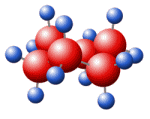


 details
details details
details details
details
